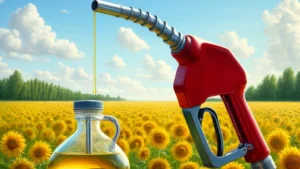Table of contents
Introduction
Chocolate is not just a delicious snack. It has a deep historical background, and behind its taste, there have been many stories and scientific studies. In this post, we will explore some interesting facts about chocolate and briefly examine its impact on us. Before we get into the main content, did you know about Korea’s Ghana Chocolate? It is named after Ghana, a world-renowned producer of high-quality cocoa, not because Ghana is famous for chocolate but simply as a brand name.
Main Content
Origin and Historical Background of Chocolate
The history of chocolate dates back to around 1900 BC, starting with the Maya civilization. At that time, the drink called ‘cacao’ had a sacred significance and was central to rituals celebrating victories in war within the Aztec civilization. This historical background shows that chocolate was not just a simple snack but played a role as a long-standing cultural symbol.
European Reception and Transformation of Chocolate
Chocolate underwent many changes when it reached Europe in the 16th century. It became popular among Spanish nobility and gradually integrated into the noble culture of various countries, leading to the emergence of chocolate houses. Chocolate served as an important venue for social interaction and secured a unique place alongside other beverages like coffee and tea.
Development and Popularization of Modern Chocolate
The Industrial Revolution later facilitated the popularization of chocolate. In particular, Coenraad van Houten’s cocoa butter extraction technique and Daniel Peter’s invention of milk chocolate played critical roles in shaping the modern form of chocolate. These technological advancements made chocolate more accessible to a broader audience and laid the foundation for the development of various forms and flavors of chocolate.
Chocolate and Health
Recent studies have shown that dark chocolate, which is rich in flavonoids, can be effective in preventing cardiovascular diseases, reducing inflammation, and improving mood. This is why some people only eat dark chocolate. However, even dark chocolate contains inherent sugars and fats that can negatively impact health if consumed excessively, so it’s important to moderate intake.
Importance of Sustainable Chocolate Production
As previously discussed in posts about environmental conservation, sustainable production in chocolate manufacturing also contributes to environmental protection and the rights of farmers. Fairtrade-certified chocolate ensures fair compensation for cocoa farmers and applies environmentally sustainable farming practices, helping to protect the ecosystem.
Conclusion
The chocolate we commonly see in supermarkets carries not only a deep, sweet flavor but also a rich history, a complex manufacturing process, and various health benefits. By choosing sustainably produced chocolate, we can contribute to creating a better world. I hope you gain a deeper understanding of chocolate and make more meaningful choices. Thank you.
FAQ
Q.1 What are the main ingredients of chocolate, and how do they impact health?
A.1 The main ingredients of chocolate are cocoa beans, cocoa butter, sugar, and milk solids. Cocoa beans are rich in flavonoids, which have antioxidant effects and can improve cardiovascular health and reduce inflammation.
Q.2 Why is chocolate good for heart health?
A.2 Chocolate, especially dark chocolate, contains a significant amount of flavonoids, which can reduce the risk of heart disease. These components help lower blood pressure, improve vascular function, and reduce the oxidation of LDL cholesterol. However, chocolate’s inherent
Q.3 What is the most important step in the chocolate manufacturing process and why?
A.3 The most critical step in the chocolate manufacturing process is conching. During this step, the texture and flavor of the chocolate are determined, and the length of conching time affects the smoothness and depth of flavor.
* Conching is the process of stirring chocolate mass for a long time to smooth out its texture and remove any off-flavors.
Q.4 Why is sustainable chocolate production important?
A.4 Sustainable chocolate production is crucial for protecting the environment, improving the living conditions of cocoa farmers, and promoting fair trade practices. This production method minimizes ecosystem destruction and has a positive social and economic impact on local communities.
Q.5 What certification marks should you look for when choosing chocolate?
A.5 Choosing chocolate with Fairtrade, Rainforest Alliance, or UTZ certification marks ensures that the product uses sustainably grown cocoa. These marks guarantee that the product has been verified for environmental protection and the protection of farmers’ rights.
Q.6 What impact can the caffeine in chocolate have on health?
A.6 Chocolate contains a small amount of caffeine, which can help improve concentration and mood. However, excessive consumption can cause anxiety or sleep issues, so it’s important to control intake.
Q.7 What are the storage methods and shelf life of chocolate?
A.7 Chocolate should be stored in a cool, dry place away from direct sunlight and high temperatures. It is best consumed within a year of manufacture, but properly stored chocolate can last longer.
Q.8 What are the main differences between milk chocolate and dark chocolate?
A.8 Milk chocolate contains a large amount of milk and sugar, making it sweeter and smoother. In contrast, dark chocolate has a higher cocoa content and less sugar, giving it a stronger bitter taste and higher flavonoid content.
Q.9 What is the scientific reason why chocolate makes you feel good?
A.9 Chocolate contains compounds that can stimulate the release of neurotransmitters in the brain, such as serotonin and dopamine. These substances can improve mood and promote a sense of happiness, temporarily enhancing well-being.
Q.10 How is a chocolate allergy diagnosed?
A.10 Chocolate allergies primarily arise from reactions to ingredients used in the manufacturing process, such as cocoa beans, milk, or nuts. If an allergic reaction is suspected, it is essential to get diagnosed by an allergist, who can identify the allergenic components through skin reaction tests or blood tests.






